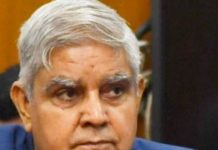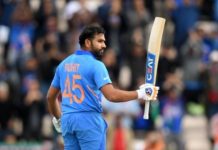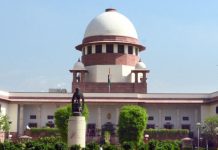
The groundwork of all happiness is good health. Yet, a measly health budget, severe shortage and uneven distribution of qualified doctors have impeded millions of Indians from enjoying their share of ‘India Shining’. Patients lying on stretchers in corridors of coveted government hospitals, stories of relatives carrying the deceased on shoulders (or carts) due to lack of suitable transport, support/sanitation staff stitching wounds, et al may sound unpalatable to some. Alas, it is but a familiar reality for majority of Indians, who have neither the access to the flashy private hospitals in metropolitan cities nor can they afford the same.
Since public health is not a major poll issue in India, successive governments have ignored it. As a result, the percentage of total national budget expenditure on health has remained shockingly low in India even in the post-reform era. While 2018 saw the announcement of world’s largest national health insurance program as the Ayushmann Bharat health scheme, there was a 2.1 per
cent decline in the allocation towards the National Health Mission, India’s largest programme for primary health infrastructure. According to the Insurance Regulatory and Development Authority (IRDA), the Indian Government’s contribution to health insurance stands at roughly 32 per cent, as opposed to 83.5 per cent in the United Kingdom. Even countries with lesser infrastructure, like Sri Lanka and Thailand, spend more than double on public health as compared to India, in per capita terms. According to WHO’s findings last year the density of doctors at the national level was 79.7 per 100,000 people. Even countries like Pakistan, Sri Lanka and most South American nations have a better doctor-population ratio.
WHO norms prescribe that there should be 1 doctor amongst a population of 1,000. As per information provided by Medical Council of India, there are a total 10,41,395 allopathic doctors registered with the State Medical Councils/Medical Council of India as on
September 30, 2017. Assuming 80 per cent availability, it is estimated that around 8.33 lakh doctors may be actually available for active service. Some states like Tripura have a Medical Council with no doctors registered with it. Out of these registered practitioners, only 1,14,969 (11 per cent) are government doctors. While Puducherry has 40 Public Health Centres (PHCs), Sikkim has only 24. There are some states like Chattisgarh where more than half the PHCs (390) function without a doctor. The national average is a little better. But with as many as 1,974 PHCs nationwide being run without a single doctor, the picture looks quite grim for the ever-surging number of patients in India. According to a recent report in The Tribune, the sleep lab at the PGI, Chandigarh has been closed due to acute shortage of doctors in the Neurology Department.
These centres follow a hub and spoke design. Each PHC is targeted to cover a population of approximately 25,000. The PHCs act as referral centres for Community Health Centres (CHCs), which are 30-bed hospitals at the district level. Figures say 12,263 specialists are required in community health centres, whereas 3,789 doctors are needed in primary health centres. The states that face an acute shortage of trained medical practitioners in PHCs are — Madhya Pradesh (614), Uttar Pradesh (1689), Assam (500), Orissa (413), Bihar (211), Gujarat (65) and Punjab (45). According to the Health Ministry’s latest statistics, the broad average might indicate a poor doctor-population ratio of around 1:1300 but government doctors in India are handling whopping levels of population, with each catering to 11,082 people. While nearly 70 per cent of the Indian population resides in rural areas, more than 60 per cent of the registered doctors are concentrated in urban areas, thus creating a highly skewed distribution and accessibility of basic health facilities.
So, the question arises that are we not producing enough doctors as a nation? There were only 19 medical colleges and universities imparting medical education in India at the time of independence. In the post-reform period, due to the rapid privatization of medical education, the total number of medical colleges increased rapidly to 412 by 2015. In 1990, 33 per cent of the medical colleges were privately owned, which increased to 57 per cent in 2011. The annual first-year graduate enrolment capacity in these colleges accounted for about 51,825 in 2015–2016 academic year. The number of doctors entered into Indian medical registers annually increased from about 4,066 in 1961 to 33,927 in 2011. This number, however, decreased to 26,342 in 2014. Consequently, the accumulated stock of registered doctors expanded from about 75,594 in 1960 to 9,43,529 by 2014.
The rapid growth of medical doctors through recent expansion of private medical education could not transform the basic health outcomes of the population in a significant way. The major reasons are: recent increase in the number of medical practitioners is not adequate to match the much rapid increase in aggregate health-care needs of the rising population; the higher capabilities and expectations of the medical practitioners, especially specialist doctors, do not match with the primary health-care requirements and affordability of the majority of people in rural areas; and increase in the number of registered doctors do not reflect the actual availability of doctors in the country because it does not take into account the attritions that occur due to death, retirement, emigration, discontinuation of practice, switching of profession, etc.
Another worrying trend is that the states which are the worst performers in the National Eligibility-cum-Entrance Test (NEET), for admission to MBBS courses, have the highest number of registered doctors. States like Maharashtra and Tamil Nadu had the lowest pass percentage in NEET at 39.57 and 39.55. While Maharashtra tops the list of registered doctors (1,53,513), Tamil Nadu is not far behind (1,26,399). Rajasthan, the best-performing state in NEET, has less than half the number of registered doctors. Some of these states were vociferous in their resistance to NEET and were had a notorious reputation of medical colleges ‘selling’ seats to potential students.
Yet training more doctors is but part of the solution, as it is becoming increasingly clear that India is in a highly competitive battle with developed countries to retain the services of those newly minted doctors. Out of the total number of graduates, about 10 per cent are opting for pastures abroad. Since the 1960s, India has been one of the most important source countries of medical doctors for the advanced countries, like US, UK, Canada and New Zealand. Despite the recent decline in the entry of Indian medical graduates to the US and UK, their accumulated stocks in these countries still remain staggeringly high. Gulf countries also host a significant number of Indian doctors. Although no reliable data are available, media reports indicate Gulf countries employ a large number of doctors from South Asia region. An estimated 20,000 doctors from South Asia, with a majority being from India, are present in the Gulf. Indian government figures indicate that 90,000 doctors trained in India were working outside the country in 2014. This constituted around 13 per cent of the active doctors in the country in 2014.
Moreover, most doctors who remain in India are more inclined to work in major cities. Currently, a public doctor posted in a Maharashtra village earns about 20000 — 25000 a month, meanwhile facing excess workloads, erratic working hours and poor living conditions. They can make more than double that by opening up a private clinic in the city with half the stress. While the skewed distribution of doctors in rural regions is often attributed to the unwillingness of doctors to work in difficult areas, others say not enough is being done to incentivise such postings. A resident of PGI, Lucknow shared, on condition of anonymity, “While doctors in government hospitals might have compulsory rural stints, a medical graduate from a private college only come to government hospitals for prestige. With the exorbitant fee structures in private colleges, their students cannot afford rural postings with low salaries and limited opportunities. On top of that, the limitation of resources adds a lot of burden on government doctors. Who would opt for so much mental stress for so little compensation?”
The recently announced Ayushmann Bharat Health scheme is a solution that is too little, too late. Speaking at the event for Amartya Sen’s book launch, development economist and activist Jean Dreze termed the soon-to-be-launched scheme a “hoax” as it was actually not big as it was being claimed to be. “The budget (for the scheme) for this year is 2,000 crore. Even if it is spent, it’s less than 20 rupees per person. It is projected as health insurance for 50 crore people, but it is virtually nothing”, said Dreze, who helped draft the first version of the Mahatma Gandhi National Rural Employment Guarantee Scheme (MGNREGA). According to him, “There are issues of management, corruption, accountability, and ethics and so on. The main problem is healthcare is way down the political agenda.”
With six new AIIMS reeling under acute faculty shortage, the Centre is trying out ways to address their human resource challenges. With only about 31 per cent of the vacancies filled, the government may come out with new recruitment guidelines, with contractual appointments, increased stipend for visiting faculty, easing off some norms, etc. In some cases, state and central governments are opting for questionable short-term solutions to address the overall shortage of medical practitioners. The ministry of health and family welfare has introduced a controversial amendment in the draft National Medical Commission (NMC) Bill, a wide-ranging legislation for reform in medicine, to allow nurses, homeopaths, Ayush practitioners and others trained in alternative medicine to practice conventional medicine after taking a bridge course, which doctors fear might promote quackery. Gujarat has employed an eccentric new tactic in response to mass shortages of medical staff across the state. The state is using children, some as young as eleven, as stand-in Bal Doctors within schools, who are only allowed to practice Ayush. To tide over the acute dearth of doctors in remote areas, Andhra Pradesh in southern India has launched a mobile health programme. Vans equipped with basic medical tools and skilled paramedics visit rural parts of the state to provide instant relief to patients.
To achieve the modest prescribed doctor-population ratio of 1:1000, India will need 2.07 million more doctors by 2030, according to a report in Indian Journal of Public Health. The National Health Policy (2017) has pledged to raise the public health expenditure from the current level of 1.1 per cent of the GDP to 2.5 per cent of the GDP by 2025. The prosperity of a nation can only be measured by the well-being of its subjects. If necessary measures are not taken soon to remedy the Indian health delivery system, an ever-growing unhealthy population will be a huge deterrent to the growth of our country.
letters@tehelka.com













